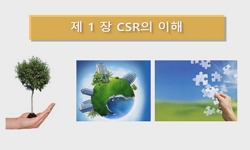A primary goal of transnationals is to offer their vision for selling products or services so that they are relevant to local cultures. The purpose of this study is to provide a solution for how transnational companies face various environments and ho...
http://chineseinput.net/에서 pinyin(병음)방식으로 중국어를 변환할 수 있습니다.
변환된 중국어를 복사하여 사용하시면 됩니다.
- 中文 을 입력하시려면 zhongwen을 입력하시고 space를누르시면됩니다.
- 北京 을 입력하시려면 beijing을 입력하시고 space를 누르시면 됩니다.
https://www.riss.kr/link?id=A105371571
-
저자
Eungoo Kang (Saint Mary’s University of Minnesota) ; Hee-Joong Hwang (Korea National Open University)
- 발행기관
- 학술지명
- 권호사항
-
발행연도
2018
-
작성언어
English
- 주제어
-
등재정보
KCI등재,SCOPUS
-
자료형태
학술저널
-
수록면
119-128(10쪽)
-
KCI 피인용횟수
1
- DOI식별코드
- 제공처
-
0
상세조회 -
0
다운로드
부가정보
다국어 초록 (Multilingual Abstract)
A primary goal of transnationals is to offer their vision for selling products or services so that they are relevant to local cultures. The purpose of this study is to provide a solution for how transnational companies face various environments and how they can utilize and overcome them and survive strategically. This study will present strategic recommendations for transnational organizations. First, transnational organizations should identify the core areas where organizational can invest or allocate its precious resources to get full advantage of the attractive opportunities form the market and focus on building strong networks with the key stakeholders. Second, they should manage the knowledge flows and provide strategic direction in cooperative venture for the long term successful future and ensure that every department has an effective coordination with other departments in order to bring about the organizational change. Lastly, they should overcome the challenges managers face in a transnational business environment when companies expand their operations into international markets. The managers need to assess the organization’s strengths and weaknesses and evaluate different forces which are present in the external environment. And then, Managers have to ensure that the company has sufficient resources, core competencies and capabilities.
목차 (Table of Contents)
- Abstract
- 1. Introduction
- 2. Research Gap in the Literature
- 3. Strategic Management for TransnationalCompanies
- 3.1. The Suggestion of Goal, Vision forTransnational Organizations
- Abstract
- 1. Introduction
- 2. Research Gap in the Literature
- 3. Strategic Management for TransnationalCompanies
- 3.1. The Suggestion of Goal, Vision forTransnational Organizations
- 4. Strategic Management for TransnationalCompanies
- 4.1. The Flow of Goods, Resources, andInformation while Developing a CoordinationSystem in a Transnational Organization
- 4.2. Managing the Boundary, Managing theKnowledge Flows, and Providing StrategicDirection in Cooperative Venture
- 4.3. The Challenges Managers face in aTransnational Business Environment and CSR
- 5. Conclusion and Implication
- References
참고문헌 (Reference)
1 Donaldson, T., "Values in tension : Ethics away from home" 74 (74): 48-, 1996
2 Mom, T. J., "Understanding variation in managers' ambidexterity : Investigating direct and interaction effects of formal structural and personal coordination mechanisms" 20 (20): 812-828, 2009
3 Bennett, D. C., "Transnational Corporations Versus the State: The Political Economy of the Mexican Auto Industry" Princeton University Press 2014
4 Hennart, J. F., "Transaction Costs Theory and the Multinational Enterprise" Routledge 73-120, 2000
5 Pearce, R., "To ‘almost see the world’ : Hierarchy and strategy in Hymer's view of the multinational" 15 (15): 151-165, 2006
6 Armstrong, C. S., "The role of information and financial reporting in corporate governance and debt contracting" 50 (50): 179-234, 2010
7 Frenz, M., "The impact on innovation performance of different sources of knowledge : Evidence from the UK Community Innovation Survey" 38 (38): 1125-1135, 2009
8 Kentor, J., "The growth of transnational corporate networks : 1962-1998" 11 (11): 263-286, 2015
9 Rugman, A. M., "The Regional Multinationals : MNEs and 'Global' Strategic Management" Cambridge University Press 2005
10 Aaker, D. A., "The Lure of Global Branding" 77 (77): 137-144, 1999
1 Donaldson, T., "Values in tension : Ethics away from home" 74 (74): 48-, 1996
2 Mom, T. J., "Understanding variation in managers' ambidexterity : Investigating direct and interaction effects of formal structural and personal coordination mechanisms" 20 (20): 812-828, 2009
3 Bennett, D. C., "Transnational Corporations Versus the State: The Political Economy of the Mexican Auto Industry" Princeton University Press 2014
4 Hennart, J. F., "Transaction Costs Theory and the Multinational Enterprise" Routledge 73-120, 2000
5 Pearce, R., "To ‘almost see the world’ : Hierarchy and strategy in Hymer's view of the multinational" 15 (15): 151-165, 2006
6 Armstrong, C. S., "The role of information and financial reporting in corporate governance and debt contracting" 50 (50): 179-234, 2010
7 Frenz, M., "The impact on innovation performance of different sources of knowledge : Evidence from the UK Community Innovation Survey" 38 (38): 1125-1135, 2009
8 Kentor, J., "The growth of transnational corporate networks : 1962-1998" 11 (11): 263-286, 2015
9 Rugman, A. M., "The Regional Multinationals : MNEs and 'Global' Strategic Management" Cambridge University Press 2005
10 Aaker, D. A., "The Lure of Global Branding" 77 (77): 137-144, 1999
11 Levitt, T., "The Globalization of Markets" 61 (61): 92-102, 1983
12 Ghoshal, S., "Tap your subsidiaries for global reach" 64 (64): 87-94, 1986
13 Heinecke, P., "Success Factors of Regional Strategies for Multinational Corporations: Appropriate Degrees of Management Autonomy and Product Adaptation" Physica-Verlag 2011
14 Haron, A. J., "Standardized versus localized strategy : The role of cultural patterns in society on consumption and market research" 5 (5): 2-13, 2016
15 Prahalad, C. K., "Serving the world's poor, profitably" 80 (80): 48-59, 2002
16 Ghemawat, P., "Semiglobalization and international business strategy" 34 (34): 138-152, 2003
17 Enright, M. J., "Regional management centers in the Asia-Pacific" 45 (45): 59-82, 2005
18 Williams, C. R., "Regional Management Overseas" 45 (45): 87-91, 1967
19 Ghemawat, P., "Redefining Global Strategy" Harvard Business School Publishing 40-64, 2007
20 Ghemawat, P., "Reconceptualizing International Strategy and Organization" 6 (6): 195-206, 2008
21 Narayandas, D., "Prepare your company for global pricing" 42 (42): 61-70, 2000
22 Aaker, D. A., "Positioning Your Product" 25 (25): 56-62, 1982
23 Pries, L., "New Transnational Social Spaces : International migration and transnational companies in the early twenty-first century" Routledge 2013
24 Averchenkova, A., "Multinational corporations and climate adaptation–Are we asking the right questions? A review of current knowledge and a new research perspective" Grantham Research Institute on Climate Change and the Environment 2015
25 Doz, Y. L., "Managing DMNCs: A search for a new paradigm" 12 (12): 145-164, 1991
26 Markov, M. A., "Internationalization of R&D and the role of TNCs at the present stage of development of the world economy" 2 (2): 129-131, 2015
27 Farida Alzhanova, "Globalization of Technological Development and Opportunities for National Innovation Systems of Developing Countries" 한국유통과학회 3 (3): 67-79, 2016
28 Ghemawat, P., "Global integration≠global concentration" 15 (15): 595-623, 2006
29 Birkinshaw, J., "Finding, forming, and performing : Creating networks for discontinuous innovation" 49 (49): 67-84, 2007
30 Porter, M. E., "Creating Shared Value" 89 (89): 62-77, 2011
31 Brunninge, O., "Corporate governance and strategic change in SMEs : The effects of ownership, board composition and top management teams" 29 (29): 295-308, 2007
32 Birkinshaw, J., "Building ambidexterity into an organization" 45 (45): 47-, 2004
33 Andersson, U., "Balancing subsidiary influence in the federative MNC : A business network view" 38 (38): 802-818, 2007
34 Rothaermel, F. T., "Ambidexterity in technology sourcing : The moderating role of absorptive capacity" 20 (20): 759-780, 2009
35 Militaru, C., "Adaptation strategies of transnational corporations at the cultural specificity of the international business environment" 6 (6): 142-, 2014
36 Aragon-Correa, J. A., "A contingent resource-based view of proactive corporate environmental strategy" 28 (28): 71-88, 2003
동일학술지(권/호) 다른 논문
-
Consumer Behavioral Systems to Approach or Avoid Generic Medicine (GM) Consumption in Japan
- 한국유통과학회
- Takefumi Hosoda
- 2018
- KCI등재,SCOPUS
-
Does Social Exclusion Cause People to Make More Donations?
- 한국유통과학회
- Min-Jung Oh
- 2018
- KCI등재,SCOPUS
-
- 한국유통과학회
- Unji Baek
- 2018
- KCI등재,SCOPUS
-
- 한국유통과학회
- Jung Wan Lee
- 2018
- KCI등재,SCOPUS






 ScienceON
ScienceON 코리아스칼라
코리아스칼라






